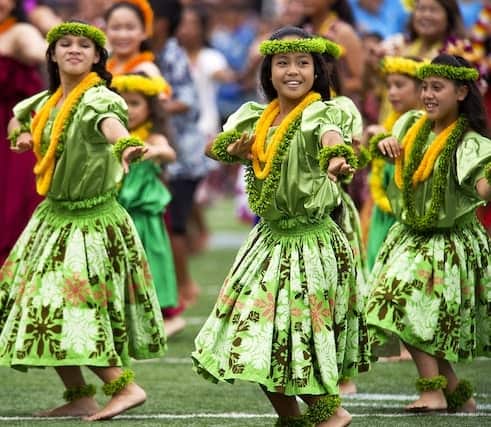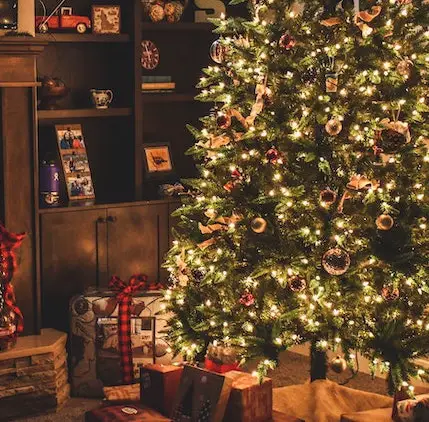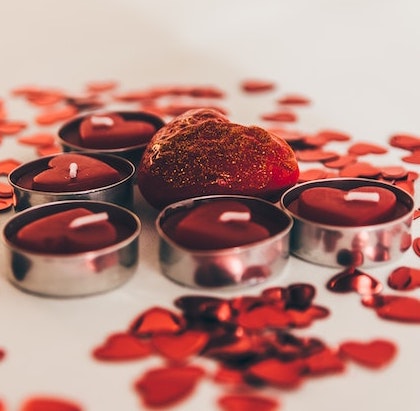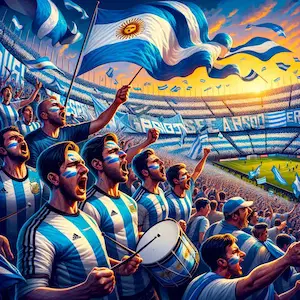Hawaiian chants have been an essential aspect of Hawaiian culture for many centuries. They serve as a medium for expressing different emotions like happiness, love, sorrow, and mourning. These chants are not just mere words but a means of connecting with the land and the past. They also provide a more profound understanding of the Hawaiian tradition and history.
This article aims to delve into the importance and beauty of these Hawaiian chants and how they fit into the cultural and societal framework of Hawaii.

Table of Contents
The Origins of Hawaiian Chants
The origins of Hawaiian chants can be traced back to the early Polynesian settlers who first arrived in Hawaii over 1,500 years ago. These chants were used to communicate and pass on stories, history, and cultural values from one generation to another. In Hawaiian mythology, the god of hula, Laka, is credited with the creation of mele.
Mele oli
Mele oli chants have a long history that dates back to ancient Hawaii. The chants were used as a form of storytelling, and they were an essential part of Hawaiian oral tradition. In ancient times, mele oli chants were performed by a group of people who would sing, dance, and chant in unison. These performances were called mele hula, and they were a form of entertainment and celebration.
Over time, mele oli chants evolved and became more complex, incorporating various musical styles and instruments. The chants also began to take on a more spiritual significance, reflecting the Hawaiian people’s belief in the power of music and its ability to connect them to their ancestors and gods.
Significance and Symbolism
Mele oli chants are deeply symbolic and represent the Hawaiian people’s values and beliefs. These chants are a reflection of the Hawaiian people’s close relationship with nature, and they often incorporate references to the natural world, such as the ocean, mountains, and sky.
Mele oli chants also play an essential role in Hawaiian spirituality and religion. They are used in various religious ceremonies and rituals, such as weddings, funerals, and other important life events. These chants are believed to have a spiritual power that can connect the living to their ancestors and gods.
Types of Mele Oli Chants
There are various types of mele oli chants, each with its unique style, meaning, and purpose. Some of the most common types of mele oli chants include:
Mele Kāhea
Mele kāhea is a type of chant used to call upon the gods or ancestors. This type of chant is often used at the beginning of a ceremony or ritual to invite the presence of the gods and ask for their blessings.
Mele Inoa
Mele inoa is a type of chant used to honor a person, place, or event. This type of chant is often performed at weddings, funerals, and other significant life events.
Mele Ho‘āeae
Mele ho‘āeae is a type of chant used to tell a story or recount a historical event. This type of chant is often performed at cultural festivals and other public events.
Mele Oli Chants Today
Mele oli chants continue to play an essential role in Hawaiian culture today. They are performed at various ceremonies and events, such as weddings, funerals, and cultural festivals. These chants are also taught in schools and universities, ensuring that the tradition is passed down to future generations.
In recent years, there has been a renewed interest in mele oli chants, with many artists incorporating them into their music. This has helped to promote the tradition and bring it to a broader audience.
Mele hula
Hula has been a part of Hawaiian culture for centuries, with origins dating back to ancient times. The early Hawaiians used hula to tell stories, celebrate life events, and honor their gods and goddesses. Mele hula, the combination of hula and music, was an essential part of these celebrations and rituals.
During the 19th century, hula faced a period of suppression due to the influence of Christian missionaries who believed hula to be a sinful and immoral practice. However, hula continued to be practiced in secret until the early 20th century when it experienced a revival, thanks in part to the efforts of Hawaiian cultural preservationists.
Significance of Mele Hula
Mele hula is a powerful expression of Hawaiian culture and tradition, embodying the values and beliefs of the Hawaiian people. Through mele hula, Hawaiians tell stories, celebrate their heritage, and connect with their ancestors. Mele hula is also a way of passing down cultural knowledge and tradition from generation to generation, ensuring that it continues to be an important part of Hawaiian life.
Types of Hula
There are two main types of hula: kahiko and ‘auana. Kahiko is the older form of hula, characterized by slower, more deliberate movements and chants. ‘Auana is the more contemporary form of hula, with faster movements and music that incorporates modern instruments such as the guitar and ukulele.
Instruments Used in Hula Music
Hula music is typically played on traditional Hawaiian instruments such as the ukulele, guitar, and steel guitar. Other instruments used in hula music include the ipu (a percussion instrument made from a gourd), the pahu (a drum made from a hollowed-out tree trunk), and the ‘ili’ili (smooth stones used as castanets).
Impact of Mele Hula on Hawaiian Culture Today
Mele hula continues to be an integral part of Hawaiian culture, with many Hawaiians actively involved in hula and music. Today, there are numerous hula schools and groups throughout Hawaii, and hula competitions are held regularly. Mele hula has also had a significant impact on the Hawaiian music industry, with many contemporary Hawaiian musicians incorporating hula elements into their music.
Mele pule
Mele Hula Chants are an ancient form of storytelling that has been practiced in Hawaii for centuries. These chants were originally performed to accompany traditional hula dances, and they served as a means of passing down historical and cultural knowledge from one generation to another. Today, Mele Hula Chants continue to be an important part of Hawaiian culture, and they are performed both as a form of entertainment and as a way of preserving the cultural heritage of Hawaii.
Definition of Mele Hula Chants
Mele Hula Chants are a form of Hawaiian music that combines dance, song, and poetry to tell stories. The word “mele” means song or chant, and “hula” refers to the dance that accompanies the chant. Together, these elements create a powerful storytelling experience that is unique to Hawaiian culture.
Brief History of Mele Hula Chants
The history of Mele Hula Chants dates back to the early days of Hawaiian culture, when these chants were used to preserve and pass down the stories, legends, and myths of the Hawaiian people. The chants were also used to praise the gods and goddesses of Hawaii, and to express gratitude for the blessings of the land and sea. Over time, Mele Hula Chants evolved to include themes of love, nature, and everyday life, and they became an important part of Hawaiian social and cultural events.
Importance of Mele Hula Chants
Mele Hula Chants are an important part of Hawaiian culture, and they serve as a means of cultural expression, identity, and connection. They also represent a unique form of storytelling that is both artistic and educational, and they provide a window into the history, language, and culture of the Hawaiian people.
Elements of Mele Hula Chants
Mele Hula Chants are composed of several elements that work together to create a powerful storytelling experience. These elements include language, music, dance, and emotion.
Language
The language used in Mele Hula Chants is the Hawaiian language, which is an endangered language that is still spoken by a small number of people in Hawaii. The language is known for its melodic and rhythmic qualities, which make it well-suited for use in music and poetry.
Music
The music in Mele Hula Chants is created using a variety of instruments, including drums, rattles, and stringed instruments like the ukulele and guitar. The rhythm and melody of the music are carefully crafted to complement the lyrics of the chant, and to create a mood or atmosphere that reflects the theme of the story being told.
Dance
The dance component of Mele Hula Chants is a form of storytelling that is performed through movement and expression. The dance movements are often graceful and fluid, and they are designed to reflect the words and emotions of the chant. The dance also serves to enhance the overall performance by adding an element of visual storytelling.
Emotion
Emotion is a key element of Mele Hula Chants, as it is through the expression of emotion that the story and message of the chant are conveyed. The emotions expressed in the chant can range from joy and happiness to sadness and grief, and they are often used to connect the performer and audience to the story being told.
Types of Mele Hula Chants
There are several different types of Mele Hula Chants, each with its own unique style and purpose. These include Kahiko, Auana, and Hapa Haole.
Kahiko
Kahiko is the oldest form of Mele Hula Chants, and it is characterized by a more traditional style of music and dance. The chants are often performed in a more formal setting, and they focus on stories and legends from Hawaiian history and mythology.
Auana
Auana is a more contemporary form of Mele Hula Chants, and it is characterized by a more modern style of music and dance. The chants are often performed in a more casual setting, and they focus on themes related to everyday life, love, and nature.
Hapa Haole
Hapa Haole is a type of Mele Hula Chant that combines elements of Hawaiian and Western music and dance. The chants often include English lyrics and incorporate instruments like the ukulele and guitar.
Mele ho’ole’a
Mele Ho’ole’a is a chant that is used to celebrate joy and gratitude. It is often performed at important events such as weddings, graduations, and other celebrations. The chant is a way of expressing appreciation for life’s blessings and the people around us. Mele Ho’ole’a is a form of poetry that uses repetition, rhythm, and melody to create a powerful and emotional experience.
History and Significance of Mele Ho’ole’a
Mele Ho’ole’a has a long history in Hawaiian culture. It has been passed down through generations as a way of celebrating important events and expressing gratitude. The chant is often accompanied by traditional Hawaiian instruments such as the ukulele, guitar, and drums. Mele Ho’ole’a was traditionally performed by trained chanters, who were highly respected in Hawaiian society. Today, Mele Ho’ole’a is still an important part of Hawaiian culture and is often performed at important events and celebrations.
How Mele Ho’ole’a is Performed
Mele Ho’ole’a is performed by a group of singers, who usually stand in a circle. The lead singer will start the chant, and the other singers will join in. The chant is often accompanied by traditional Hawaiian instruments such as the ukulele, guitar, and drums. The rhythm and melody of the chant create a powerful and emotional experience for both the performers and the audience.
The Role of Mele Ho’ole’a in Hawaiian Culture Today
Mele Ho’ole’a is still an important part of Hawaiian culture today. It is often performed at important events such as weddings, graduations, and other celebrations. The chant is a way of expressing gratitude for life’s blessings and the people around us. Mele Ho’ole’a is also used as a way of connecting with Hawaiian history and traditions. It is a way of keeping the culture alive and passing it on to future generations.
Mele Ho’ole’a and the Hawaiian Language
Mele Ho’ole’a is often performed in the Hawaiian language. The use of the Hawaiian language in the chant is an important part of preserving the language and keeping it alive. The Hawaiian language was almost lost at one point in history, but thanks to efforts to preserve it, it is now experiencing a revival. Mele Ho’ole’a is just one example of how the language is being kept alive and celebrated.
The Healing Power of Mele Ho’ole’a
Mele Ho’ole’a has a healing power that is recognized in Hawaiian culture. The chant is often used to help heal emotional and physical wounds. The rhythm and melody of the chant can create a calming and healing effect on the body and mind. Mele Ho’ole’a is also used as a way of connecting with nature and the spiritual world. It is a way of finding inner peace and connecting with the world around us.
Ancient Hawaiian Chants: Preserving the Legends and Myths of the Past
Ancient Hawaiian chants, also known as oli, are chants that were passed down from generation to generation, preserving the legends and myths of the past. These chants were usually performed by trained chanters who were well-versed in Hawaiian language and history. Ancient chants were used to honor the Hawaiian gods and goddesses, to recount the genealogy of Hawaiian families, and to celebrate important events such as births, marriages, and deaths.
Religious Chants: Honoring the Gods and Goddesses of Hawaii
Religious chants, also known as pule, are chants used to honor the gods and goddesses of Hawaii. These chants are usually performed by trained kahunas or priests during religious ceremonies. Religious chants are used to seek the blessings of the gods, to give thanks, and to ask for forgiveness. In ancient Hawaii, religious chants were an important part of the daily life of the people.
Hula Chants: Expressing Emotions and Narratives through Dance
Hula chants, also known as mele hula, are chants that are performed alongside hula dance. Hula chants are used to express emotions, narratives, and stories through dance. These chants are usually accompanied by traditional Hawaiian instruments such as the ukulele, ipu, and pahu. Hula chants are performed during cultural events such as the Merrie Monarch Festival and the Aloha Festivals.
Work Chants: Celebrating Hawaiian Work Ethos and Traditions
Work chants, also known as hana mele, are chants that celebrate the work ethos and traditions of Hawaii. Work chants were traditionally performed by workers to accompany their work, such as planting, fishing, and canoe paddling. These chants were used to keep the workers in sync, to give them motivation, and to celebrate their work.
Love Chants: Expressing the Intense Emotions of Love and Affection
Love chants, also known as mele aloha, are chants used to express the intense emotions of love and affection. These chants were traditionally performed by lovers to express their love for one another. Love chants were also used to woo potential lovers and to
celebrate marriages and other romantic occasions. Love chants are usually accompanied by traditional Hawaiian instruments such as the slack-key guitar and the steel guitar.
Healing Chants: Seeking Spiritual and Physical Healing
Healing chants, also known as ho’oponopono, are chants used to seek spiritual and physical healing. These chants were traditionally performed by healers to help their patients achieve a state of balance and harmony. Healing chants are used to address emotional, mental, and physical issues, and to seek forgiveness and reconciliation. In ancient Hawaii, healing chants were an important part of the traditional healing practices.
Battle Chants: Celebrating Warrior Spirit and Bravery
Battle chants, also known as mele kaua, are chants used to celebrate the warrior spirit and bravery of the Hawaiian people. These chants were traditionally performed before battles to motivate the warriors and to ask for divine intervention. Battle chants were also used to commemorate important battles and victories. Battle chants are usually accompanied by traditional Hawaiian instruments such as the pu (conch shell) and the ipu heke (double gourd drum).
The Role of Hawaiian Chants in Hawaiian Culture
Hawaiian chants have played a significant role in Hawaiian culture throughout history. They were used to mark important occasions such as births, deaths, and the arrival of a new chief. Chants were also used to honor the gods and goddesses of Hawaii and to celebrate the beauty of the islands.
The Different Types of Hawaiian Chants
There are various types of Hawaiian chants, each with their own unique purpose and style. Some chants are meant to be sung in a group, while others are meant to be performed solo. Some are sung in a slow, meditative style, while others are more upbeat and celebratory.
The Preservation of Hawaiian Chants
The preservation of Hawaiian chants is essential to the preservation of Hawaiian culture as a whole. In the late 1800s, the Hawaiian language was nearly extinct due to the influence of Western culture. However, efforts to preserve the language and culture began in the early 1900s, and today, Hawaiian chants are still being practiced and performed.
The Practice of Hawaiian Chants Today
Today, Hawaiian chants are still being practiced and performed in various settings, from hula competitions to cultural festivals. Many hula schools teach Hawaiian chants as part of their curriculum, and there are also dedicated groups that focus solely on the preservation and practice of Hawaiian chants.
The Significance of Hawaiian Chants Today
Hawaiian chants continue to be a vital part of Hawaiian culture and identity. They serve as a connection to the past, a way to express cultural values, and a reminder of the beauty and power of the islands.
Hawaiian Chants Frequently Asked Question
Are Hawaiian chants still used today?
Yes, Hawaiian chants are still used today in various cultural events and ceremonies.
Who can perform Hawaiian chants?
Hawaiian chants are usually performed by trained chanters, kahunas, and healers.
What instruments are used in Hawaiian chanting?
Traditional Hawaiian instruments such as the ukulele, ipu, pahu, slack-key guitar, steel guitar, pu, and ipu heke are used in Hawaiian chanting.
What is the purpose of Hawaiian chants?
Hawaiian chants serve various purposes, including preserving traditions and myths, honoring gods and goddesses, expressing emotions and narratives, celebrating work, seeking healing, and celebrating bravery.
See Related Articles

Gregorian Christmas Chants

Love Spell Chants

Best Softball Chants for U12

AKA Sorority Chants

Argentina Football Chants

